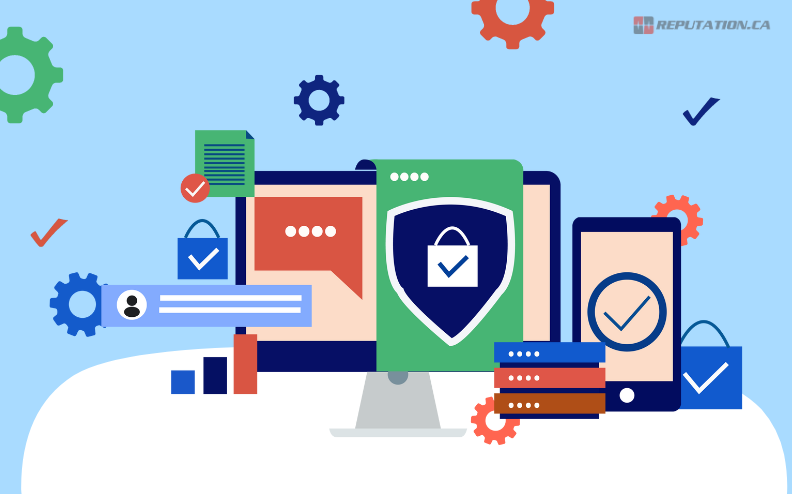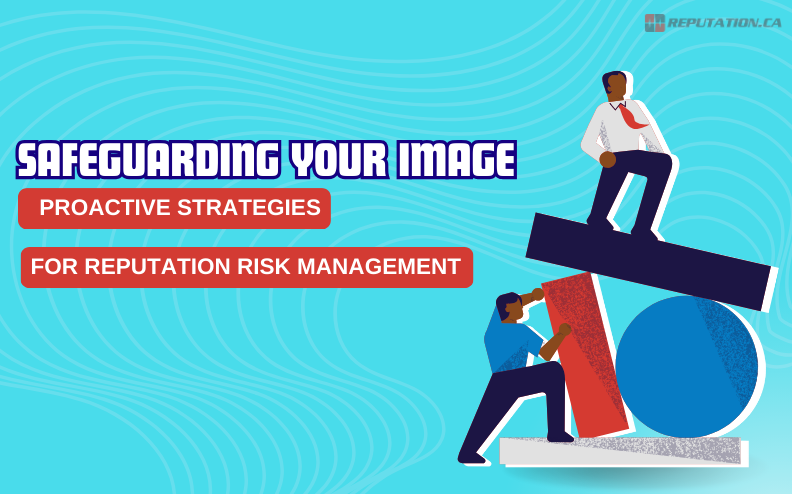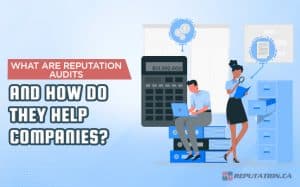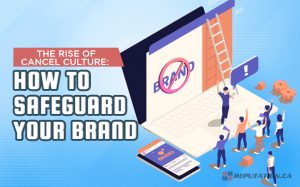Navigating reputation risk is critical in today’s business landscape. What immediate measures can you take to protect your company? This article strips down the complexities of reputation risk, guiding you through identifying hazards and crafting a robust defense strategy tailored to preserve and reinforce your business reputation.
Key Takeaways
- Reputation risks can stem from various internal and external factors and significantly impact a company’s earnings and market value, highlighting the need for a strategic, proactive approach to managing reputational risk.
- Effective reputation risk management programs require a robust assessment framework, a specialized committee for oversight, and strategies such as leveraging corporate communications and implementing robust contingency plans.
- Leadership plays a crucial role in setting the ethical tone and prioritizing reputation risk management, with technology and regulatory compliance being essential to managing and mitigating reputation risks.
Understanding Reputation Risk

The main focus of reputation risk management is to curb potential threats to a firm’s reputation, thereby preventing adverse financial fallout from reputation-related crises. A damaged reputation can significantly affect a company’s earnings, the standing of its top executives, and the overall market valuation, which can be linked to 25% to 60% of a company’s market value. That’s why managing reputation risk should be a strategic priority, and it’s essential to manage reputational risk effectively, while also considering strategic risk.
Reputational risk commonly stems from non-compliance with industry standards or legal requirements, discrepancy between the company’s reputation and its actual character, evolving external perceptions and expectations, and the impact of both conventional crises and emerging digital threats. What approaches can firms adopt to tackle this multi-dimensional risk? By implementing robust risk management programs that help identify and address these risks proactively, and having contingency plans in place to mitigate potential long-term consequences.
Identifying Sources of Reputation Risk

Pinpointing possible triggers of reputational risk remains vital for all businesses. These triggers can originate from within the organization or be induced by third-party external factors. We will further explore these two categories: internal triggers and external threats.
Internal Triggers of Reputational Risk
Internal triggers of reputational risk include:
- Employee misconduct
- Poor product quality
- Data breaches
- Weak internal controls
For instance, a single advertising campaign that falls short can lead to a substantial adverse public response, damaging the company’s reputation.
These internal triggers have the potential to ignite a viral news cycle, significantly harming a company’s reputation, leading to substantial revenue loss, and causing long-term brand damage. This underscores the significance of all-encompassing corporate governance practices and forward-thinking risk management.
External Threats to Reputation
External threats to a company’s reputation include:
- Negative media coverage
- Social media backlash
- Digital attacks
- Regulatory changes
These factors can magnify negative press, leading to widespread negative public perception and, in some cases, significant financial impact.
The repercussions of a digital attack can be notably destructive. Dissemination of rumors, fabrication of negative reviews, and production of manipulated content can erode trust and damage the credibility of the company.
Furthermore, regulatory changes present compliance challenges that, if not met, can lead to public scrutiny and harm the company’s standing in the market. One such regulatory body enforcing these changes is the Securities and Exchange Commission.
The Intersection of Reputation Risk and Operational Risk
Reputation risk is also an operational risk since it can arise from internal deficiencies, such as inadequate processes and policies, which can harm a company’s reputation and impact operational performance. For instance, let’s consider a data breach.
A data breach represents a significant operational failure that can have a detrimental effect on a company’s reputation. Even after resolving operational issues, the lasting impact on trust among stakeholders can be challenging to overcome.
Crafting a Reputation Risk Management Program
An all-inclusive reputation risk management program is crucial for every organization, irrespective of its size or sector. Such a program should include a risk assessment framework and a dedicated committee to oversee and manage reputational risks.
Developing a Reputational Risk Assessment Framework
Initiating a solid reputation risk management program begins with devising a reputational risk assessment framework. This risk management process involves:
- Determining the company’s current public image
- Assessing the sources and impacts of these risks
- Analyzing internal factors
- Identifying and assessing the risks involved in the risk management lifecycle.
When conducting a reputational risk assessment, it is important to consider the likelihood of risks occurring and the potential impact they may have. This approach helps in prioritizing the risks that need immediate attention, facilitating efficient resource allocation in risk management.
Forming a Reputational Risk Committee
Establishing a Reputational Risk Committee is a fundamental component of an extensive reputation risk management program. This committee’s primary responsibilities involve overseeing and managing reputational risks and conducting risks within its defined scope of responsibility, with a focus on reporting to top management and the board.
The Reputational Risk Committee generally includes members from the board of directors, the Group Chief Risk Officer (CRO), and members from the Governance Committee. The committee’s responsibility is to govern the processes for identifying, monitoring, reporting, and managing material reputation risks, ensuring efficient governance and coordination of reputational risk management.
Strategies to Mitigate Reputation Risk

Efficient strategies to lessen reputation risk play a key role in upholding a company’s reputation. They include leveraging corporate communications and implementing robust contingency plans, which we’ll examine in more detail in the following subsections.
Leveraging Corporate Communications

Corporate communication plays a crucial role in mitigating reputation risk by acknowledging risks, explaining the situation, its origins, and potential consequences. This transparency fosters trust among stakeholders, which is essential during crisis management and when mitigating reputational risk.
Corporate communications can contribute to the mitigation of reputational risk by:
- Integrating risk awareness into strategy and planning
- Controlling processes for consistent messaging
- Strategically promoting positive content online
- Establishing a proactive crisis management plan and team
Having a well-prepared public relations team is also essential in mitigating reputational damage and taking control of the narrative, which ultimately helps to mitigate reputational risk.
Implementing Robust Contingency Plans
Having well-defined contingency plans in place is crucial for companies to respond quickly and effectively to reputation threats, minimizing potential damage. These plans include:
- Identifying and assigning ownership of reputational risks
- Listing and prioritizing risks
- Integrating reputational risk strategy into business planning
- Creating incident response plans
- Establishing board oversight for these risks
Implementing these plans involves:
- Incorporating reputational risk into strategic and planning processes
- Establishing control processes
- Recognizing the potential impact of all actions on public perception
- Engaging in program management
- Conducting comprehensive planning
- Implementing the plan
- Conducting testing and exercises
- Continuously improving the program.
The Role of Leadership in Managing Reputation Risk
Corporate leaders are instrumental in establishing the ethical climate and guaranteeing that reputation risk management takes precedence. The CEO is responsible for designating a specific individual to oversee the management of reputational risks. The potential candidates for this role may encompass individuals such as:
- the COO
- the CFO
- the heads of risk management
- strategic planning
- internal audit
These individuals possess the necessary qualifications and experience for the position.
The primary duties of a Chief Operating Officer (COO) in managing reputation risk involve the identification, assessment, and mitigation of risks impacting the organization’s operations, as well as the proactive evaluation of potential risks. CFOs play a role in ensuring appropriate management of personnel and integrating reputational risk into the company’s comprehensive risk management and crisis management plans.
Measuring the Impact of Reputation Issues
Assessing the financial and non-financial ramifications of reputation issues can help organizations understand the real costs tied to reputational risk and dictate the prioritization of risk management efforts. The primary indicators of reputational risk impact encompass:
- Negative social media sentiment
- Weekly store traffic volume
- Weekly online revenue
- A strong positive reputation among stakeholders
- Customer satisfaction surveys
- Media coverage analysis
- Employee engagement
The financial impact of reputation issues can be measured by:
- Quantifying the cost of a bad reputation
- Assessing the severity and likelihood of reputational risk
- Determining bottom-line cost savings
- Measuring lost revenue, changes in capital, operating costs, or regulatory costs
Additionally, the non-financial impacts can be quantified through cost-benefit analysis, comparing the costs linked to a business’s reputation issues against the advantages of a positive reputation.
Enhancing Your Business Model to Protect Reputation
Firms should consistently review and modify their business models to cater to shifting stakeholder expectations and rising reputational risks. This can involve:
- Evaluating third-party ratings of their current performance with stakeholders
- Creating internal assessment models for the impact of various stakeholder groups
- Pinpointing areas where expectations are not being met
- Maintaining regular communication and feedback with stakeholders
- Partnering with other organizations
Emerging reputation risks that should be considered when developing business models include food safety incidents, damage to well-crafted business models, hidden threats to company survival, poor and unsafe workplace conditions, and the potential for issues to go viral on social media. Therefore, enhancing a business model to handle reputation risk involves establishing board oversight, integrating reputational risk strategy into business planning, creating incident response plans, incorporating reputational risk into strategy and planning, ensuring thorough process control, recognizing that all actions can affect public perception, being proactive in risk management, knowing how to recognize a crisis, and carefully considering actions before proceeding.
Utilizing Technology in Reputation Risk Management

In today’s digital era, technology assumes a significant role in reputation risk management. Some key benefits of reputation management software include:
- Centralizing interactions with external stakeholders
- Optimizing communication
- Enabling organizations to oversee and control their brand’s digital footprint
- Enhancing a favorable reputation
- Addressing customer input proactively
Broader technology solutions designed to support reputation risk management offer increased visibility into a business and the ability to identify potential risks. These solutions encompass a range of management tools, IT vendor risk management platforms, and advanced security tools aimed at reducing risks.
Guaranteeing adherence to pertinent regulations and industry standards can assist firms in sidestepping reputational risks tied to non-compliance and regulatory penalties. Non-compliance with regulations can have a substantial effect on a company’s reputation, leading to reputational harm, erosion of customer confidence, and challenges in reputation restoration. Additionally, non-compliance may result in financial penalties, legal ramifications, and potential business closure.
Instances of reputational risks resulting from regulatory non-compliance encompass:
- Penalties and fines
- Reputational damage
- Restricted market access
- Product delays
- Diminished product quality
- Subpar customer service
- Incongruent behaviors and sentiments with the consumer base
- Inappropriate social media practices
- Irresponsible data management
Therefore, navigating regulatory compliance is key to managing reputational risk.
Summary
In conclusion, reputation risk management is a multi-faceted process that involves identifying and assessing potential risks, developing a robust management program, leveraging corporate communications, implementing contingency plans, and ensuring regulatory compliance. Technology plays a crucial role in this process, providing tools to monitor and manage reputational risks effectively. With the right strategies, companies can protect their reputation and maintain the trust of their stakeholders.
Frequently Asked Questions
Why is reputational risk important?
Reputational risk is important because it can have a significant impact on a business when it fails to meet stakeholder expectations and is negatively perceived. It can affect any business, regardless of size or industry.
What is a real life example of reputational risk?
Treating employees and partners poorly, such as subjecting them to unsafe work conditions, can lead to reputational risk for a business based on negative word-of-mouth and employee turnover.
What is reputational risk management?
Reputational risk management involves mitigating threats to a company’s reputation to prevent financial harm from reputation-related crises.











